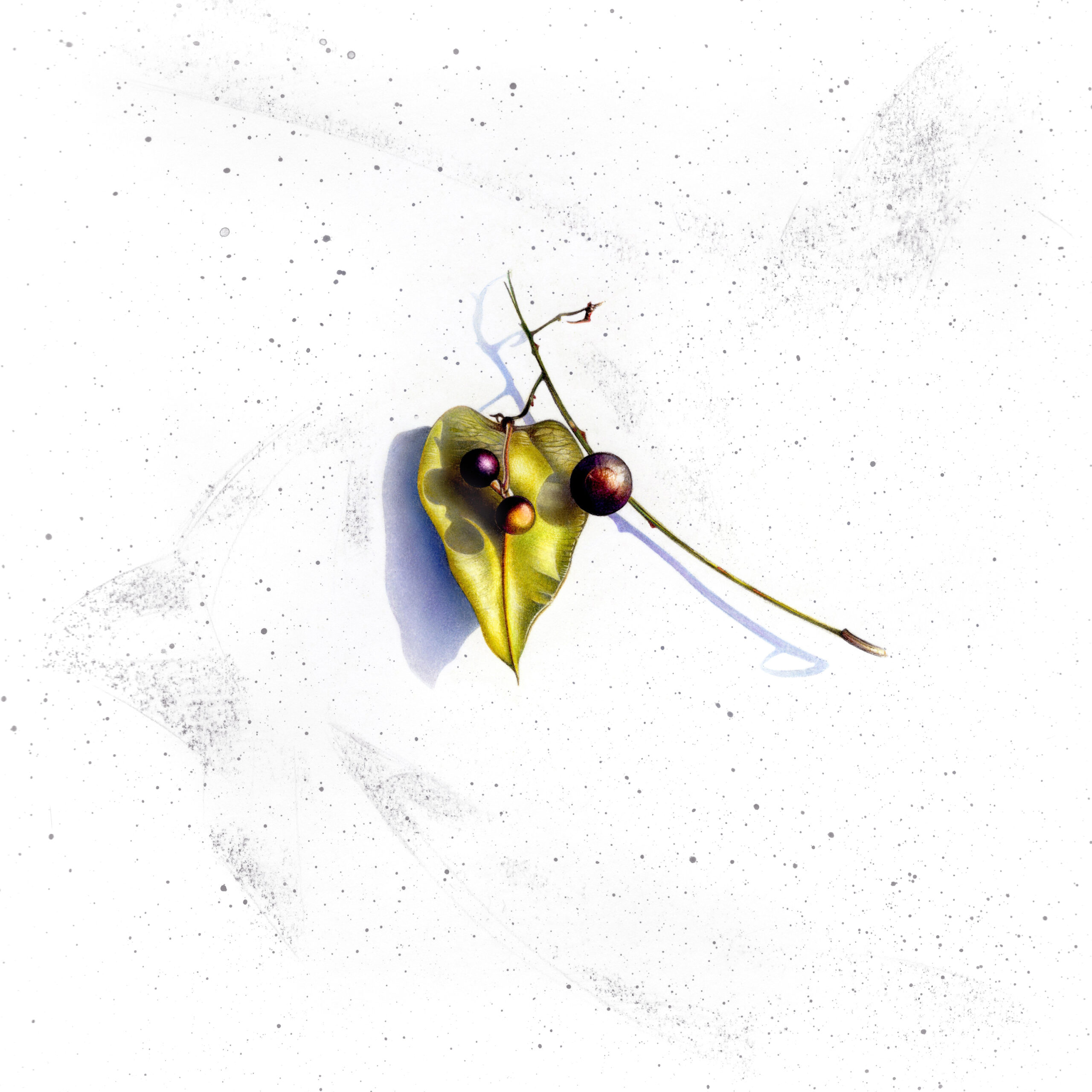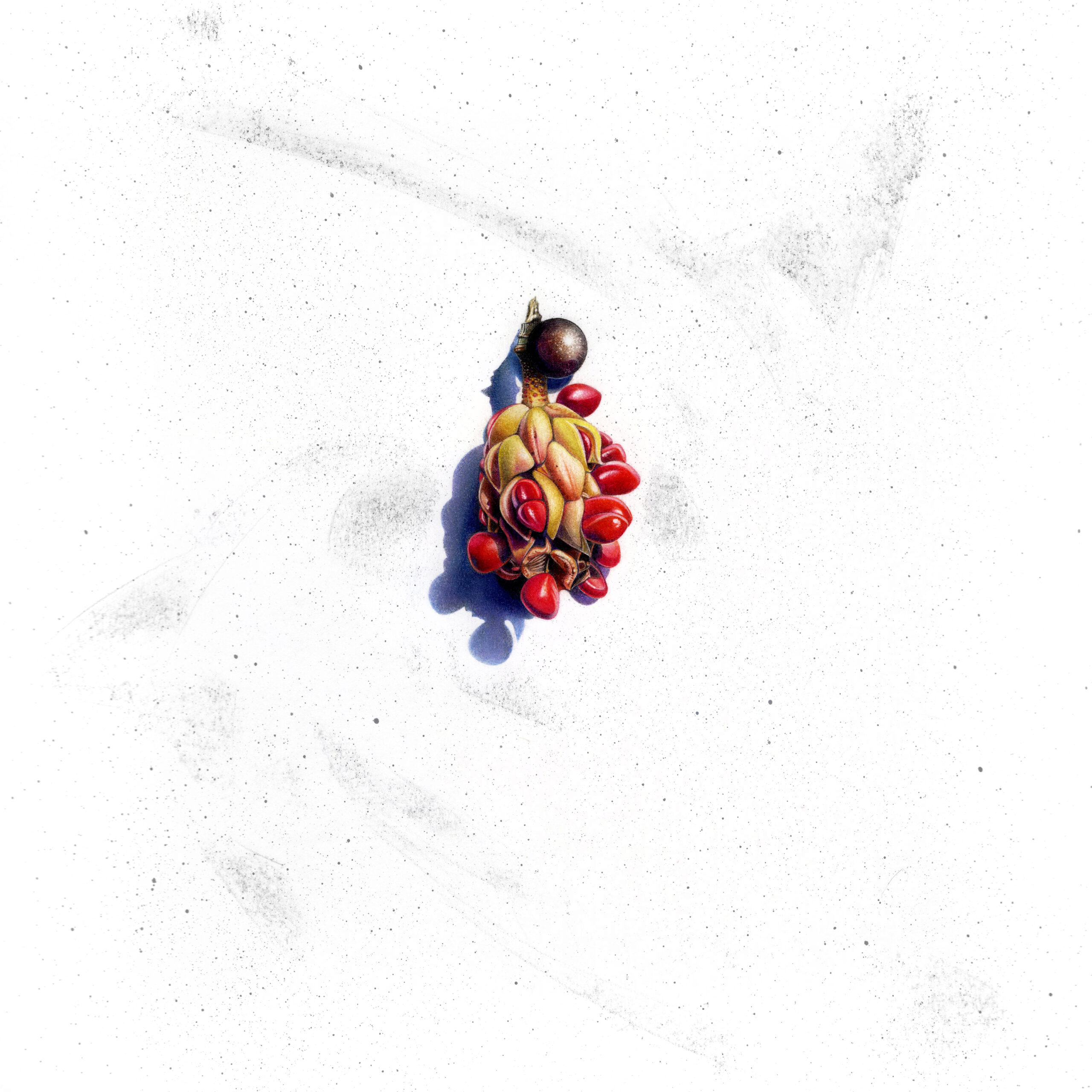An Interview Laura Fantini on Seeds for Tomorrow: Woody Plants of the Arnold Arboretum
In her Arnold Arboretum online and in-person exhibitions, Seeds for Tomorrow: Woody Plants of the Arnold Arboretum, artist Laura Fantini explores the seed as an entry into the intricate and intimate world of a plant’s birth, growth, sex, and progeny. What do we know of seeds? They are (often) those little bits of matter that we might see as maple sumaras lilting through the air or a scarlet magnolia follicle. Seeds nestle and fly, hitchhike on birds and bats, drop like pebbles to the earth, all to enable life to continue. Laura Fantini lets us into this fascinating world. She is our guide to the design nature created.
Seeds are the essence of life and essential to Fantini’s creative spirit. “Hope,” the project she brings to us in this exquisite show, epitomizes what we all must remind ourselves to have. Each hyper-realistic, colored pencil drawing of a seed shows us “Hope” made visible. Although these seeds from the plants of the Arboretum rest momentarily for their portraits, they look poised to dance away as soon as released. With these drawings, no matter how small, you will encounter a new and exciting side of a plant and discover a thoughtful and thought-provoking journey into the amazing power of a seed—no matter how small.

Q. What is your connection to the Arnold Arboretum, as I know you are a resident of both Brooklyn, New York and Bologna, Italy?
A. I visited the Arnold Arboretum for the first time in 2016, and in 2019 I visited several times to collect seeds. I would get lost for hours observing every single little detail I came across. I always discover something unique, fascinating, and inspirational to collect and draw. I am able to forget the fast-paced world. Places like the Arnold Arboretum are like temples for me, preservation temples. In 2020 when the pandemic hit, it was impossible for me to travel, but I was able to receive new seeds from staff at the Arboretum, including some special ones from the Dana Greenhouses.
Q. I love your title of “Hope” for each separate drawing. Talk about why you see seeds as such a powerful symbol of hope.
A. Hope is an ongoing project because seeds represent hope and a new beginning. They are an integral part of who we are. In fact, seeds have always been considered a metaphor for survival and rebirth. Seeds are small, but complicated and mysterious. They have the ability to pause their growth for months or years and yet still be alive and come out of their inactivity at the right moment.
What they do is extraordinary and magnificent. Without seeds, life would be threatened, from human beings to plants and animals. Sometimes a seed is all that remains of a plant. It is the beginning and the end, but also the hope for the next generation.
It is a powerful message to understand how important nature is and how art can be as powerful as a tiny seed in nature.
Q. It is great that you see the power in a seed aligned to the power of art. Your medium is colored pencil for this show. Have you always worked in pencil, and why do you find it works for what you are trying to achieve?
A. My love with colored pencils started when I was really young. My parents gave me a box of Carand d’Ache colored pencils, and I started experimenting with this fascinating medium. Colored pencil was not a well-known, or taught, technique when I was attending Liceo Artistico (art school) in Italy. My interest was so strong, one of my art teachers gave me the freedom to further explore the affinity I had with this medium.

Pencils allow me to capture every detail and develop a deep and intimate relationship with the surface of the work.
Art can be powerful because it invites people to slow down and see things from another perspective, especially if the subject is intimate and potent at the same time.
Q. Your interest in, and care for, nature came through in your proposal, as it does in your art. How do think about nature as you continue to draw these often complex, and always detailed, seeds?
A. Nature is powerful, yet fragile and complicated. Seeds might look like the smallest element we see with our own naked eye, but their complexity is simply breathtaking, and their development is the continuation and end of life.
Every time I am in front of a seed or a leaf, I am also amazed by the shades, the colors, the perfect shapes, and the beauty we have in nature. I try to recreate and stop in time this beauty and dimensional depth. But my goal is also to invite people to reconnect with nature and observe the wonderful natural world around us.
Q. Are there particular seeds that either offer a challenge, or that you are particularly drawn to?
A. It is hard to choose among seeds, every pod is beautiful in its unique way. But more than others, I find maple, magnolia, and dogwood seeds inspiring.
I’ve always been fascinated by maples and maple seeds, not only for their colors, textures and shapes, but also by the way the winged seeds spin down to the ground and take flight on the wind as far as a mile. It is a fascination from childhood, when I used to think of them as whirling helicopters landing all over the yard.

Magnolia fruit and seed pods seem, at the same time, rather bizarre and unique. They are cone-shaped and spread open to reveal bright-red seeds that look like berries. Every time, it is a challenge to draw their shapes and render their bright colors.
I am always captivated by the small and otherworldly fruit of the dogwood with its odd-looking surface. Even though it is so small, it looks perfect and is always a challenge to draw.
Seeds for Tomorrow: Woody Plants of the Arnold Arboretum, drawings by artist Laura Fantini, will be on view on our website through May 30. Select drawings are also on view in the Hunnewell Building exhibition space though May 30.
